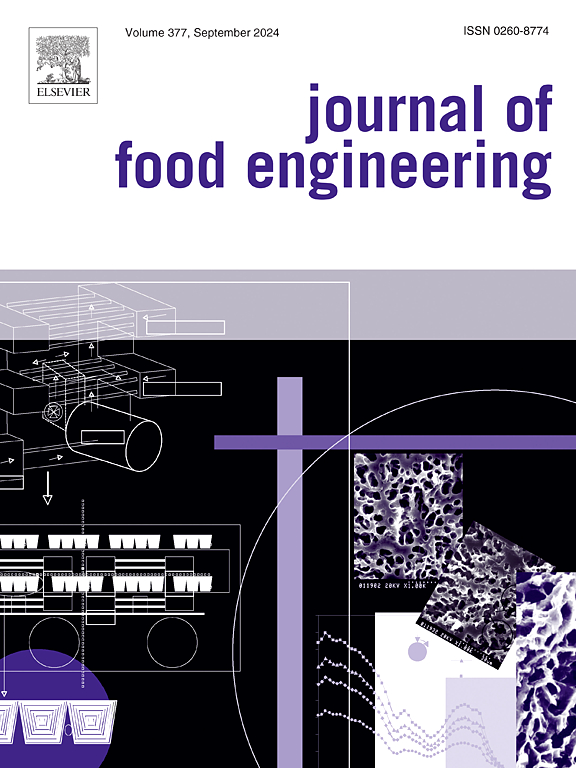Drying temperature effects on oil dispersion and properties of alginate-kiwi seed oil films
IF 5.8
2区 农林科学
Q1 ENGINEERING, CHEMICAL
引用次数: 0
Abstract
This study evaluated the effects of drying temperatures (25, 30, 40, and 60 °C) on the oil dispersion and physicochemical properties of sodium alginate–kiwi seed essential oil composite films, including their drying kinetics, oil distribution, morphology, mechanical strength, thermal stability, and barrier properties. The drying temperature significantly influenced the physical integrity and oil dispersion of the film. A drying temperature increased from 25 to 60 °C reduced film thickness from 54.1 to 43.3 μm, increased water vapor permeability from 5.0 × 10−11 to 5.9 × 10−11 g m−2 s−1 Pa−1, and adversely affected ultraviolet light barrier properties, while enhancing transparency and having no notable effect on moisture content. Confocal laser scanning microscopy, scanning electron microscopy, atomic force microscopy, and X-ray diffraction analysis revealed that low temperature drying enhanced homogeneity, compactness, and crystallinity. Mechanical properties, including tensile strength (1.6–2.23 MPa) and elongation at break (70.9 %–93.6 %), improved with the increasing temperatures up to 40 °C but declined thereafter. These findings highlighted the influence of drying temperature on the functional properties of the composite films, suggesting that low drying temperatures of 25–30 °C are optimal for maintaining the desirable structural and functional characteristics for food packaging applications.
干燥温度对海藻酸盐-猕猴桃籽油膜油分散性能的影响
本研究评估了干燥温度(25、30、40和60℃)对海藻酸钠-猕猴桃籽精油复合膜的油分散和理化性质的影响,包括其干燥动力学、油分布、形态、机械强度、热稳定性和阻隔性。干燥温度对薄膜的物理完整性和油的分散性有显著影响。当干燥温度从25℃提高到60℃时,膜厚从54.1 μm降低到43.3 μm,水蒸气透性从5.0 × 10−11 g m−2 s−1 Pa−1增加到5.9 × 10−11 g m−2 s−1 Pa−1,对紫外光阻隔性能产生不利影响,但透明度提高,含水量无显著影响。共聚焦激光扫描显微镜、扫描电子显微镜、原子力显微镜和x射线衍射分析表明,低温干燥增强了均匀性、致密性和结晶度。拉伸强度(1.6 ~ 2.23 MPa)和断裂伸长率(70.9% ~ 93.6%)等力学性能随着温度的升高而提高,但随后下降。这些发现强调了干燥温度对复合膜功能特性的影响,表明25-30°C的低干燥温度对于保持食品包装应用所需的结构和功能特性是最佳的。
本文章由计算机程序翻译,如有差异,请以英文原文为准。
求助全文
约1分钟内获得全文
求助全文
来源期刊

Journal of Food Engineering
工程技术-工程:化工
CiteScore
11.80
自引率
5.50%
发文量
275
审稿时长
24 days
期刊介绍:
The journal publishes original research and review papers on any subject at the interface between food and engineering, particularly those of relevance to industry, including:
Engineering properties of foods, food physics and physical chemistry; processing, measurement, control, packaging, storage and distribution; engineering aspects of the design and production of novel foods and of food service and catering; design and operation of food processes, plant and equipment; economics of food engineering, including the economics of alternative processes.
Accounts of food engineering achievements are of particular value.
 求助内容:
求助内容: 应助结果提醒方式:
应助结果提醒方式:


